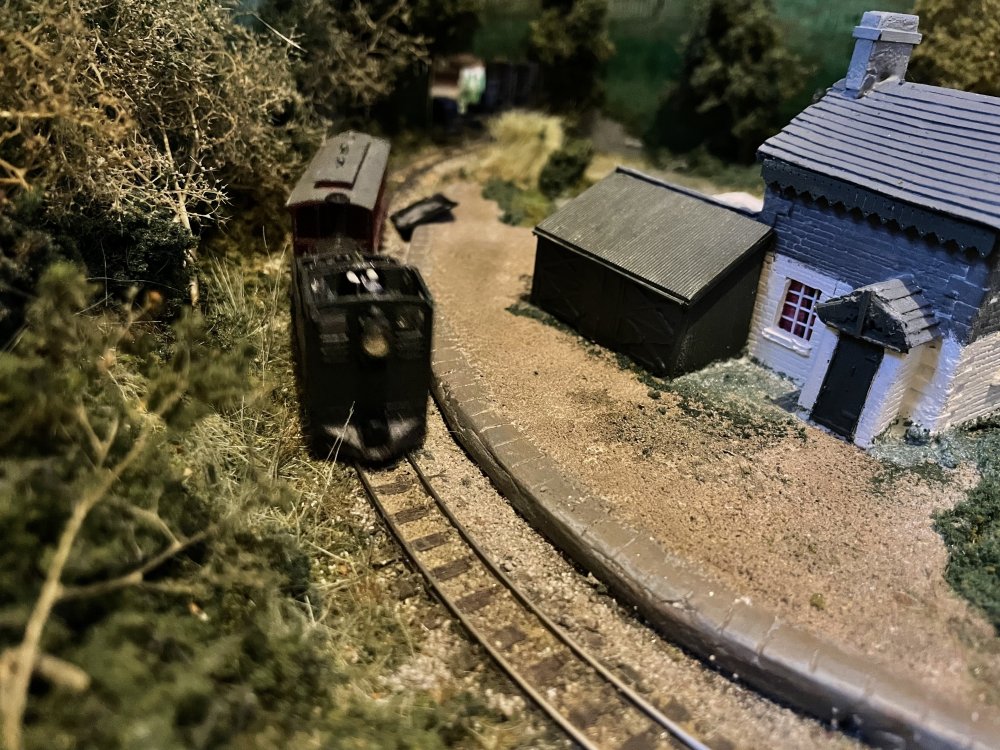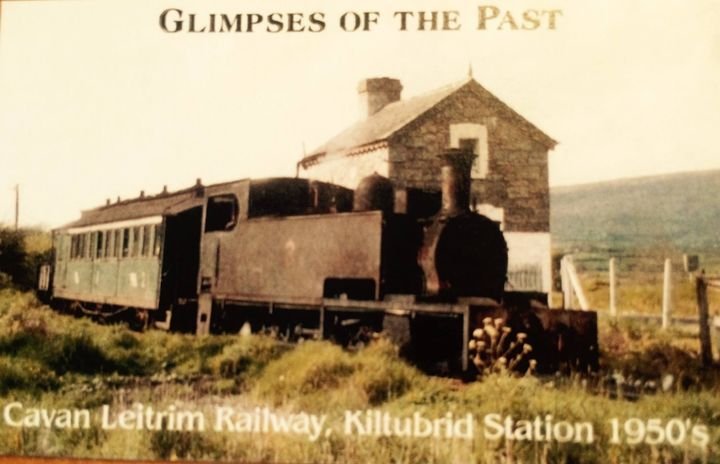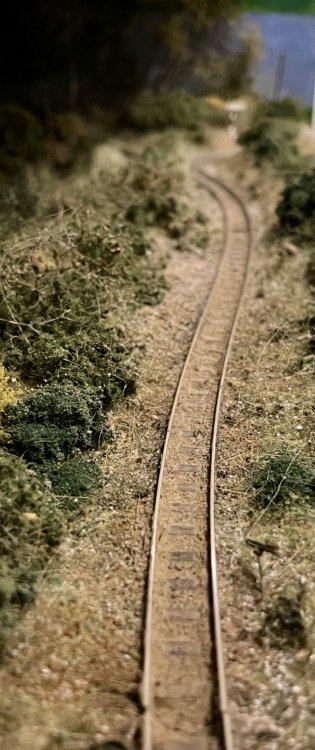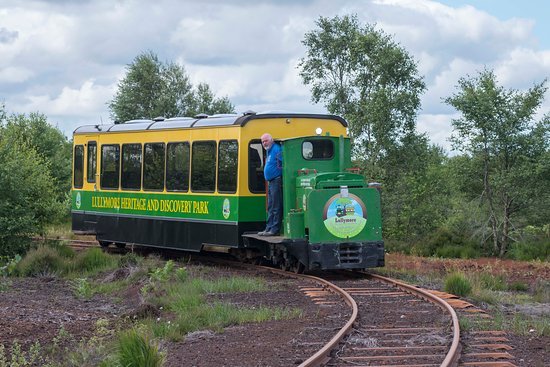-
Posts
4,643 -
Joined
-
Last visited
-
Days Won
59
Content Type
Profiles
Forums
Events
Gallery
Everything posted by Galteemore
-

Ops! Recovering a locomotive from Picton Harbour
Galteemore replied to Mayner's topic in Photos & Videos of the Prototype
So when locos run off the baseboard edge…there truly is a prototype for everything….. -
Yes I get that. I suspect something like a 3’ Parry People Mover is what’s required. Good for the eco credentials too…..https://en.m.wikipedia.org/wiki/Parry_People_Movers
-
That looks like a doorway of some kind he’s standing in. Can probably roughly scale off that. I don’t think he rivalled DeValera in the height stakes ! I’m not that tall myself but I won’t be volunteering to be scanned by ModelU dressed like that….. To be honest, you could get an HO scale Preiser station master or policeman and stick a few shiny dots of paint on and it would look fine.
-
Nice. The 800 class looks -most prototypically - suitably careworn!
-
The Time Traveller or the Invisible Man? Could be either in Donegal !
-
Thanks J-mo - it’s all scratch built, using an Alphagraphix card kit as a plan. Card sheet as the core structure, with plastic stone sheet on top, and corrugated Evergreen for the shelter. Windows are individually added layers of microstrip. Card strips for roof tiles to give layered effect, and etched valances from 3mm Society.
-
Excellent idea, John. My brother models 009 and the stuff coming out commercially now is tremendous. Kato tram chassis are incredibly reliable and smooth foundations for a variety of projects too - I have been most impressed by them and there are a number of good almost-Irish 3D prints available to fit them. The other end of the payout is also a Kiltubrid pastiche - with the road/rail bridges and t-junction.
-
With the vast bulk of heavy duty scenery now done - mostly set dressing left - it was time to bite the bullet, clean the track and see if trains actually ran after months of blasting the layout with glue, ballast and scenic fibres. Mercifully yes. Although some 3mm scale tree surgeons will be required as ‘Fury’s’ roof was knocked off by a branch - it can be glimpsed lying at the far platform end….The crew have parked their train in the overgrown siding and repaired across the road for a restorative after that shock ! That siding is very handily placed for bringing in kegs of the black liquidation - it may be in use more often than it looks…
- 24 replies
-
- 13
-

-

-
Great to see such progress. It’s a lot of effort but will really set off the end product.
-
Thanks everyone. Bit of Bank Holiday spare time means that Drumkeeran Road station is now more or less done..the inspiration from Kiltubrid on the C and L is probably clear !! You can just see the corrugated waiting shelter beyond the station house. The whitewash was done in this way to assist sighting on curves. Various C and L stations were painted various ways, some being white overall, but I liked the distinctive 2-tone Kiltubrid style. The freight siding clearly sees little traffic….
- 24 replies
-
- 12
-

-

-
Yep. Pretty sure I was on that
-
What was the consist of that MRSI special to Westport in the early 90s? I have a vague recollection of spending part of it in the NIR executive coach 913.
-
Never even got that far! The solebars just kept fracturing on me when I tried popping the wheels in….
-
Tell us more, Andy. I got a 3mm scale C and L brake from there and have really struggled with it…..
-
From a scratch builder’s perspective, I’ll grant you that it’s a lot more of an enticing option than the compound curves of a regular AEC….and it does have an offbeat appeal, like one of those Neilson tanks - another case of putting straight lines where most designers put curves !
-
The Bulleid numbers were 2660-2665….but I agree re the looks….:)
-
REC is ‘Railway Enthusiasts Club’ - GB based group which did a lot of Irish tours - you’ll see the headboard on the SLNC pic above. 2661 may be the number - the unofficial REC archive records a Bulleid of that no in one of their photos.
-
The famous steam tour of 64 visited this branch but I think this image is c 54-57, when the REC had a number of Irish visits, including a run on the 1115 Sligo-Enniskillen goods, behind the SLNC’s premier loco image below courtesy @Irishswissernie That’s what I thought at first but for the cooling tower….
-
Ballasting under way. Hopefully impression of a 3’ byway emerging. I had originally been going to use 009 set track throughout but decided on flexible for scenic front half of layout. You can see the transition curve here in the distance as it begins to segue into the set track curve
- 24 replies
-
- 17
-

-

-

-

Were the 90s the greatest era in Irish Railways?
Galteemore replied to declan64's topic in General Chat
Thinking about it, there is probably an inverse, if not causal, relationship between the comfort of the consumer and the interest of the enthusiast. Most Leitrim farmers would have been delighted to see a railcar working the 7:20 to Sligo it if was a winter’s night. Not so the enthusiast who would quite happily have bumped along in a mouldy compartment coach behind ‘Enniskillen’ or ‘Sir Henry’…. -

Were the 90s the greatest era in Irish Railways?
Galteemore replied to declan64's topic in General Chat
Dr Pan - as I hinted above re the toilets, got to agree on much of what you say. As a consumer, the railway is much more pleasant. What one does miss is the ‘atmosphere’. Perhaps ‘chance’ isn’t so much the word as ‘events’, JHB. On the old railway, there were much more ‘events’ - pretty much as you describe them above. And we used to talk of ‘railwaymen’ (adjust for historic gender bias) - with the sense that this was a caste who did this as a vocation and not a job. We can’t romanticise the past of course. But the facts show that some drivers did come in on days off to shine up their locos. And the knack they had (I’m thinking of Frank Dunlop here - NIR’s Chief Loco Inspector) - was of taking these events and calmly imposing that logic on them, no matter how challenging the events were ! -

Were the 90s the greatest era in Irish Railways?
Galteemore replied to declan64's topic in General Chat
Yes I do understand that. I do think however that we have now lost a great deal more. Insofar as one can analyse these things with any degree of objectivity, the CIE network of the 60s-90s was effectively a steam age railway without steam. Most Victorian railway staff, bar the loco crews, would have seen the essentials of their daily tasks going on much as before. I have often tried and failed to analyse what I like about railways. But I think much of it has to do with the inherent tension between a fixed system and the world of chance. This is at its most obvious in the steam age. The train ran to a timetable but depending on the fettle of the loco and the character of the crew you could have a run to remember. A degree of that persisted into the 90s. Would it be a 141 or a 121? What odd stock might appear? What freight might you see on the way? Would the tablet exchange be smooth ?And those fascinating glimpses from the window of long closed branches, rusty rails trailing off into the wild green yonder. All that has gone, sadly. -

Were the 90s the greatest era in Irish Railways?
Galteemore replied to declan64's topic in General Chat
It’s probably fair to say that the 1990s was the last gasp of the classic Irish railway as we knew it - a railway that would attract the English enthusiasts seeking a world they had lost. That no longer applies - IE and NIR are effectively diesel tramways. At least we still have them. I’m just glad I experienced the bang and thump of a GM with Cravens over jointed rail, under semaphore signals. One thing I don’t miss is the toilets….. -
Excellent. Triang TT3 Jinty? May be worth joining 3mm Soc if not already a member. They have a most useful 2nd hand sales service for such items. Could be a useful way of getting 12mm stuff….
-
.png.c363cdf5c3fb7955cd92a55eb6dbbae0.png)









